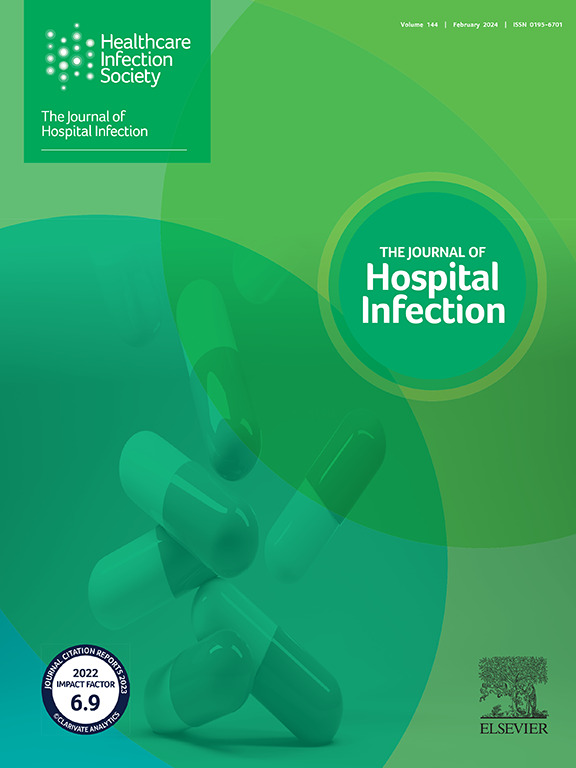通过废水监测监测养老院的抗菌素耐药性-范围审查。
IF 3.1
3区 医学
Q1 INFECTIOUS DISEASES
引用次数: 0
摘要
背景:抗菌素耐药性构成越来越大的威胁,特别是在养老院,由于频繁使用抗生素和合并症,老年居民特别容易受到伤害。在2019冠状病毒病大流行之后,人们越来越关注废水监测,以便在医疗保健环境中发现和监测病原体。目的:本研究遵循乔安娜布里格斯研究所的范围审查框架,绘制基于废水的流行病学研究的现有文献范围,研究老年人养老院的抗菌素耐药性。方法:检索MEDLINE、Embase、Scopus、Web of Science、ProQuest、谷歌Scholar等6个电子数据库,检索时间为建库日期至2024年8月26日。搜索策略采用关键词的变体;“抗菌素耐药性”、“基于废水的流行病学”和“老年人养老院”。研究根据资格标准进行筛选,数据由一名研究人员提取。另一位研究人员审查了图表数据,并解决了任何疑问。这项研究确定了83项研究,其中11项研究在2015年至2024年间进行。研究结果:这些研究使用抓取或复合取样,结合基于培养的细菌鉴定方法,抗菌药物敏感性测试以及聚合酶链反应和全基因组测序等分子技术。肠杆菌,包括大肠杆菌和克雷伯氏菌,是最常见的,具有高耐药率,特别是对某些青霉素和头孢菌素。结论:尽管本综述报告的样本量较小,但基于废水的流行病学在监测养老院废水中的抗生素耐药细菌方面显示出前景,提供了对趋势和遗传多样性的见解,有可能为公共卫生战略和抗生素管理规划提供信息。本文章由计算机程序翻译,如有差异,请以英文原文为准。
Monitoring antimicrobial resistance in care homes through wastewater surveillance: a scoping review
Antimicrobial resistance poses a growing threat, especially in care homes where older residents are particularly vulnerable due to frequent antibiotic use and comorbidities. Following the COVID-19 pandemic, there has been a growing focus on wastewater surveillance for detecting and monitoring pathogens in healthcare settings. This study followed the Joanna Briggs Institute scoping review framework to map the extent of available literature on wastewater-based epidemiological studies addressing antimicrobial resistance in care homes for older adults. Six electronic databases (Medline, Embase, Scopus, Web of Science, ProQuest, and Google Scholar) were searched from date of inception until August 26th, 2024. The search strategy employed variations of the keywords: ‘antimicrobial resistance’, ‘wastewater-based epidemiology’, and ‘care homes for older adults’. Studies were screened based on eligibility criteria, with data extracted by one researcher. Another researcher reviewed the charted data and resolved any queries. The search identified 83 studies, from which 11 studies, conducted between 2015 and 2024, were included. The studies used grab or composite sampling, combined with culture-based methods for bacterial identification, antimicrobial susceptibility testing, and molecular techniques such as polymerase chain reaction and whole-genome sequencing. Enterobacterales, including Escherichia coli and Klebsiella spp., were the most frequently detected, with high resistance rates, especially to some penicillins and cephalosporins. Despite the small sample sizes reported in this review, wastewater-based epidemiology shows promise in monitoring antibiotic-resistant bacteria in care home wastewaters, offering insights into trends and genetic diversity, with the potential to inform public health strategies and antibiotic stewardship programmes.
求助全文
通过发布文献求助,成功后即可免费获取论文全文。
去求助
来源期刊

Journal of Hospital Infection
医学-传染病学
CiteScore
12.70
自引率
5.80%
发文量
271
审稿时长
19 days
期刊介绍:
The Journal of Hospital Infection is the editorially independent scientific publication of the Healthcare Infection Society. The aim of the Journal is to publish high quality research and information relating to infection prevention and control that is relevant to an international audience.
The Journal welcomes submissions that relate to all aspects of infection prevention and control in healthcare settings. This includes submissions that:
provide new insight into the epidemiology, surveillance, or prevention and control of healthcare-associated infections and antimicrobial resistance in healthcare settings;
provide new insight into cleaning, disinfection and decontamination;
provide new insight into the design of healthcare premises;
describe novel aspects of outbreaks of infection;
throw light on techniques for effective antimicrobial stewardship;
describe novel techniques (laboratory-based or point of care) for the detection of infection or antimicrobial resistance in the healthcare setting, particularly if these can be used to facilitate infection prevention and control;
improve understanding of the motivations of safe healthcare behaviour, or describe techniques for achieving behavioural and cultural change;
improve understanding of the use of IT systems in infection surveillance and prevention and control.
 求助内容:
求助内容: 应助结果提醒方式:
应助结果提醒方式:


